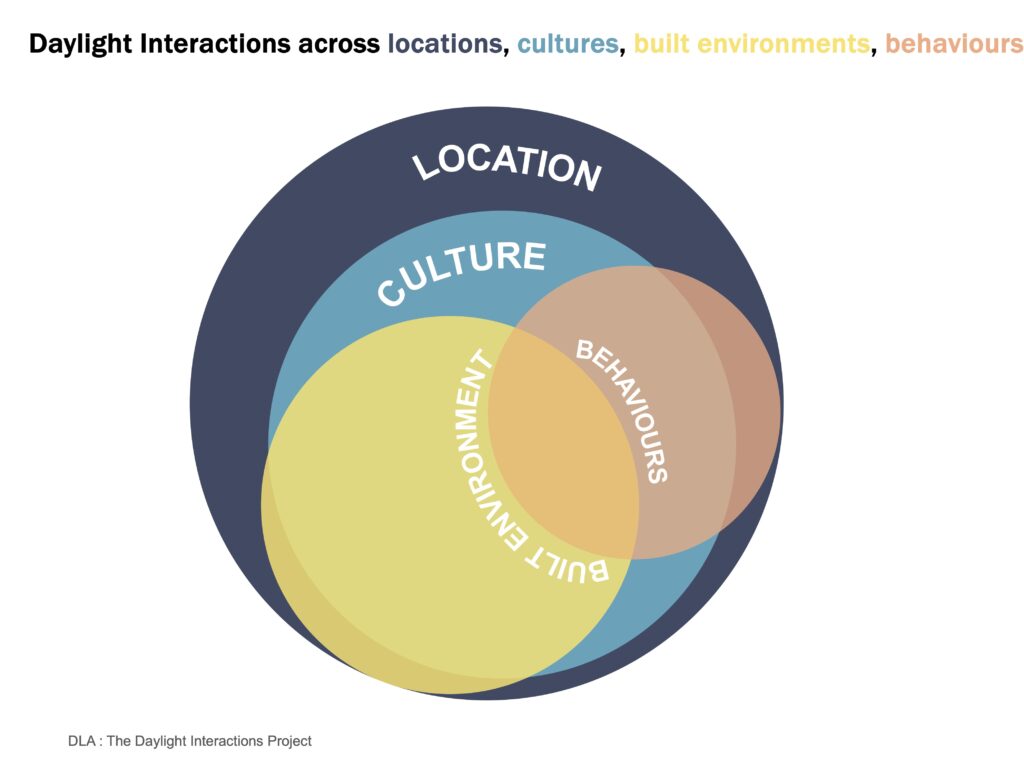Daylight Interactions

There is growing recognition of the many benefits optimal interactions with daylight can have on our health and well-being. Our behaviours and the places where we engage in those behaviours can affect our exposure to daylight. For example, caring for a houseplant near a window, enjoying an afternoon coffee on a balcony, or reading the morning newspaper on a veranda are simple and affordable ways to increase daylight exposure. While architectural research focuses on optimizing daylight in spaces, such as increasing the window-to-floor area ration or changing window tints, and chronobiological research investigates the appropriate timing and duration of daylight exposure, there is a need to investigate the lines in between: How do people interact with daylight in their daily environments and how is this influenced by variety factors, such as culture or geography?
Our goal is to develop a framework and a collection of resources that discusses how people interact with daylight.

Lead
Dr. Priji Balakrishnan, Karlsruhe Institute of Technology & Technical University Berlin, Germany
Dr. Anna M. Biller, Technical University Munich, Germany
Publications
Biller, A.M., Balakrishnan, P. & Spitschan, M. Behavioural determinants of physiologically-relevant light exposure. Communications Psychology 2, 114 (2024). https://doi.org/10.1038/s44271-024-00159-5